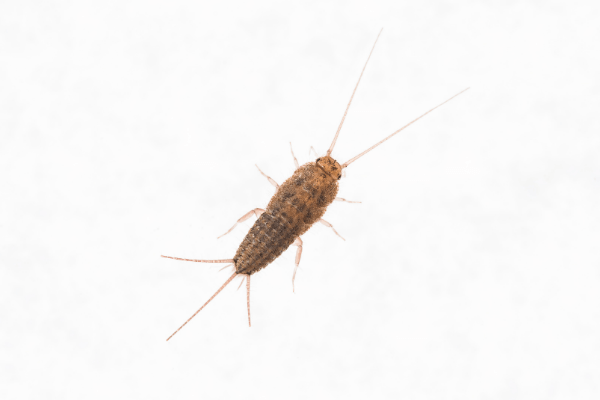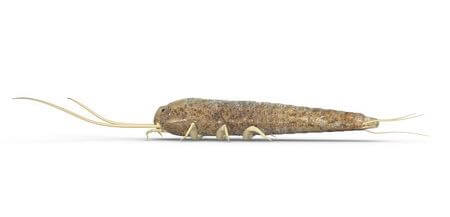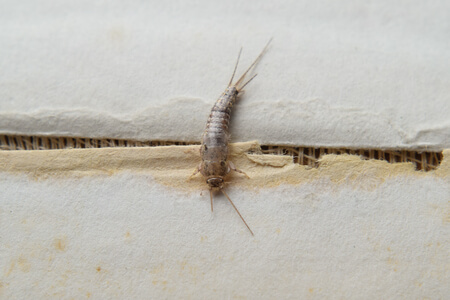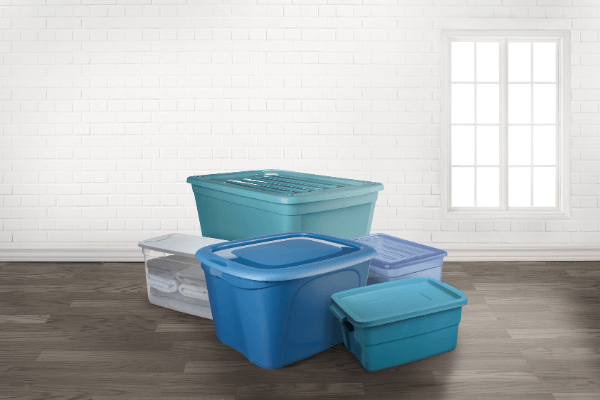- Home
- Silverfish Control
- Getting Rid of Firebrats
Getting Rid Of Firebrats
This post may contain affiliate links so I earn a commission.
Getting rid of firebrats is probably a main priority in your mind if you’ve noticed the carrot-shaped insects scurrying about your house.
Your first course of action is understanding the insect’s lifecycle and habits.
Once you get a grip on this, you’ll be better prepared in eliminating this pest from your once happy abode.
Firebrats (Thermobia domestica) like silverfish, are members of a collection of insects known as bristletails, due to their long antennae and their three, slender and long structures resembling hairs extending from the last segmented portion of their bodies.
Both are nocturnal, doing their feeding during night.

Firebrats resemble the common silverfish (Lepisma saccharina) in shape, quick movements, both are wingless and both insects range around 1/2 inch in size.
However, whereas silverfish are silvery and scaly, firebrats are grayish-brown in color and speckled, as well as having dark spots covering their back.
This difference in coloration helps in distinguishing both insects from the other.
Firebrat Lifecycle And Living Conditions
Like silverfish, firebrats are long-lived, with a lifespan of around three to four years.
Female firebrats lay eggs that are around 1/25 of an inch in length, and an average clutch contains anywhere from one to 500 eggs, with 50 more average.
The eggs take about two weeks to hatch in optimal, warm conditions and if conditions are too cold, the firebrat eggs remain dormant for about six weeks, hatching as soon as temperatures warm.
The egg-laying stage to adult takes firebrats approximately four months, so if you think about all the adult insects that are possible in such a short frame of time, getting rid of firebrats within your home becomes even more imperative.
Firebrats generally live together in large groups in a main hiding place during the day, which helps in regulating humidity and temperature around the eggs and any newly hatched young nymphs.
In addition, this area is where the females usually deposit all their eggs.
 Firebrat
FirebratSuitable habitats for firebrats are warmer than what silverfish prefer, and the insect generally congregates in dark environments that are 90 degrees Fahrenheit and warmer.
Therefore, in your quest of getting rid of firebrats, you are more than likely to find them around hot water heaters, dryers, hot water and steam pipes, ovens and inside your attic or basement.
They will also take up residence inside wall voids, cracks and crevices, bookshelves and closets.
As they search for water, you might even find them inside your tub where they’ve fallen and can’t get out.
Where Did They Come From?
Firebrats can live happily inside your home for years, reproducing with their populations increasing at an almost seemingly never-ending pace, especially if you make getting rid of firebrats a low priority.
Outdoors, firebrats reside under tree bark, logs, landscaping timbers, rocks or similar objects.
You can even find the insects living in the nests of mammals and birds.
Firebrats prefer organic materials that are damp.
The insect invades homes seeking shelter when their populations outdoors become too large, or conditions become too wet.
When outdoor conditions become drought-like, firebrats make their way indoors in search of moisture.
In addition, you can unknowingly carry the insect indoors through cardboard boxes, lumber materials, and furniture.
Firebrats seem also to be more prevalent in houses containing wooden shingles or siding.
The insect makes its way into the house by way of the wooden materials.
Getting Rid Of Firebrats - Damage
Like their cousins the silverfish, firebrats prefer the same types of food, having a preference for materials originating from a plant-based source that have high amounts of protein and carbohydrates.
 Silverfish Eating
Silverfish EatingTheir feeding choices include book binding glue and paper pages, wallpaper, all types of paper products, dog food, foods make from cereal grains and even dried meats, so even the family dog isn’t immune to a firebrat attack.
Therefore, getting rid of firebrats within your home should rise in importance, because who wants to share their food with scaly insects – probably nobody.
You might even find firebrat damage to clothing made from silk, linen and even some types of synthetic fabrics like rayon.
Noticeable damage includes yellow stains and chewed threads.
However, it seems that the insect leaves woolen clothing alone.
Firebrat Prevention
Methods of prevention go a long way in getting rid of firebrats and controlling the problem.
Inspect areas where the insect is most likely to reside and you can monitor activity by placing an index card covered in flour where you believe populations are present.
Allow the card to remain undisturbed for several weeks and then check to see if its edges are chewed and frayed or there are small scraping marks across the flour.
This is a sure sign of the presence of firebrats.

Cockroach sticky tape also works in monitoring activity and catching insects crawling over it.
Inspect any materials you bring into the home for firebrats, as well as areas where papers and boxes are stored.
Store all your preferred food sources, important papers or clothing in plastic containers with tight fitting lids, caulk any holes and cracks around doors, windows, and pipes where firebrats can enter the home.
In addition, frequent vacuuming of the home to eliminate dropped crumbs helps control the problem.
Using a dehumidifier in areas where the humidity is high and prone to moisture helps control firebrat populations.
Repair areas where there might be water leaks like around piping, since the insect likes moist conditions.
Getting Rid Of Firebrats - Chemical Control
When it comes to getting rid of firebrats within your home, you will probably have to reach for chemicals.
Only select products labeled for indoor use in controlling firebrats and follow directions carefully, especially if children or pets reside there.
Apply to any areas where firebrats are likely to reside or you’ve seen activity like cracks and crevices, inside closets or bookshelves, baseboards and around piping.
If you are searching for a less toxic control method in your pursuit of getting rid of firebrats, boric acid and diatomaceous earth sprinkled in areas of activity work well in drying the insect out and killing it.
However, you will have to replace both products if it becomes wet.
Whatever product you decide to use, don’t apply it in areas where you are preparing or storing food.
If all these methods seem to fail, your next option is calling a professional pest-control expert.



